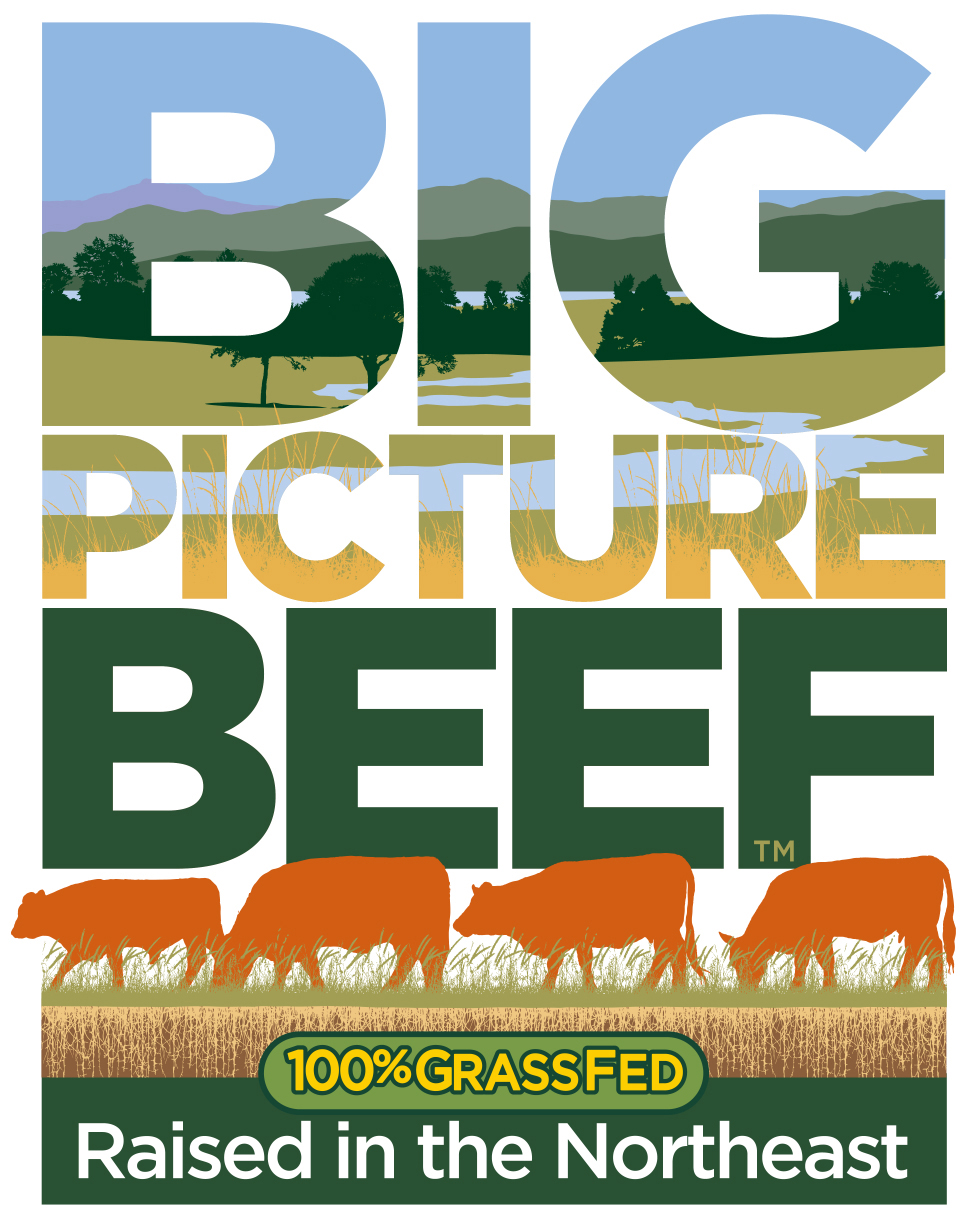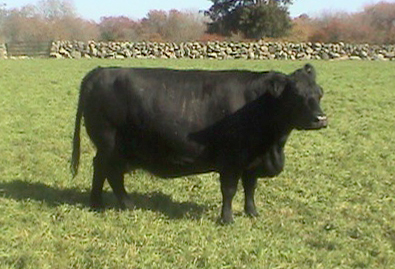BREEDING & GENETICS
This is the late, great Potherage Masterpiece in England in the 1960s. His semen was sent all over the world for artificial insemination, and he was one of the foundation bulls of the Rotokawa Devon herd developed by Ken McDowell in New Zealand. We imported that herd to the United States in 2008, and many of those cattle and their descendants still live in Hardwick, Massachusetts.
For a successful 100% grass-fed beef program, the cattle need certain genetic traits. British breeds tend to function better on grass than continental European breeds, and also produce tastier meat. But producers may find individual animals or sub-sets of many breeds with genetics that work for a grass-fed beef program. With good foundation animals, careful breeding can develop a herd with the necessary characteristics.
THE TYPE OF BREEDING PROGRAM
Before choosing a bull, the producer must have a clear plan for the offspring produced by the breeding:
If the offspring will be sold for meat, the producer should take advantage of hybrid vigor by cross-breeding; that is, the bull should be a different breed from the females. This pairing will produce hybrid offspring with carcasses that have a higher volume of cut-out. These offspring - even if they look terrific- should not go back into the herd to be bred again, because a cross-breed will not reliably pass on desired traits to descendants.
If the offspring will used as seed stock to upgrade a herd, the breeding pair should be chosen for breed purity and the desired traits of the particular breed. The resulting offspring will pass on their desirable traits, and therefore be valuable for upgrading a herd for grass-fed beef production.
THE INFLUENCE OF THE BULL
To produce offspring for a 100% grass-fed beef, the producer must select a suitable live bull or obtain semen from a bull with good characteristics for a grass-fed diet. While breeding with a live bull is a convenient option because the bull will catch cattle in heat, using a live bull is only recommended if the available animal has the traits that are needed. If he does not, the breeder must either find another bull that does have these traits, or use AI (artificial insemination) with semen from a bull that has proven ability to sire offspring that will thrive and fatten on grass. (See the photo and caption below.)
This young calf already displays the deep body of cattle suited for 100% grass-fed production. In contrast, a calf the same age in the background lacks this depth of body. The comparison underscores the importance of choosing a “grass sire.” The two mothers pictured with their calves are very similar, but one was bred by a great bull and the other was bred by a bull lacking the necessary traits for a 100% grass program.
EVALUATING CATTLE FOR A BREEDING PROGRAM
In a good grass-fed herd, all the cattle should be rugged, docile, easy fleshing, able to flourish on grass and forage alone, and produce a high volume of tender and tasty meat. We have found that most of these traits can be determined by a physical examination of the animals. Both males and females should be deep-bodied and fine-boned. The deep body indicates the capacity to digest a large volume of pasture biomass. Fine bones correlate to tender meat.
As well as a deep body and straight back, a bull should have strong, wide shoulders and a prominent crest.
A good “grass sire” will stamp his progeny with physical traits that indicate good performance in a grass-fed beef program. Females should be evaluated for easy birthing and good lactation and mothering, as well as body confirmation.
Measuring the animals is useful to evaluate how well they will function in the herd. At one year of age, both males and females should be wide and moderate in height, with shoulders as wide as their rump length. Mature females should be 48-50″ tall, and mature bulls should be less than 56″ tall.
As well as a deep body and straight back, females should have a wide, deep rump.
The problem with taller cattle (long legs, less body depth) is that they can't be finished adequately on grass and forage alone; they don't have the capacity for digesting enough pasture biomass to finish well within a time period that is economical for the producer. Measuring the animals also allows us to predict volumes of meat.
In addition, structural correctness indicates durability and longevity. Animals that are long-lived and will breed consistently for many years are critical for financial success.
We have developed a tool called Spider Graphs (also linked from the Introduction above) that allows us to demonstrate and evaluate the strengths and weaknesses of a bull's body conformation in order to inform breeding decisions.





